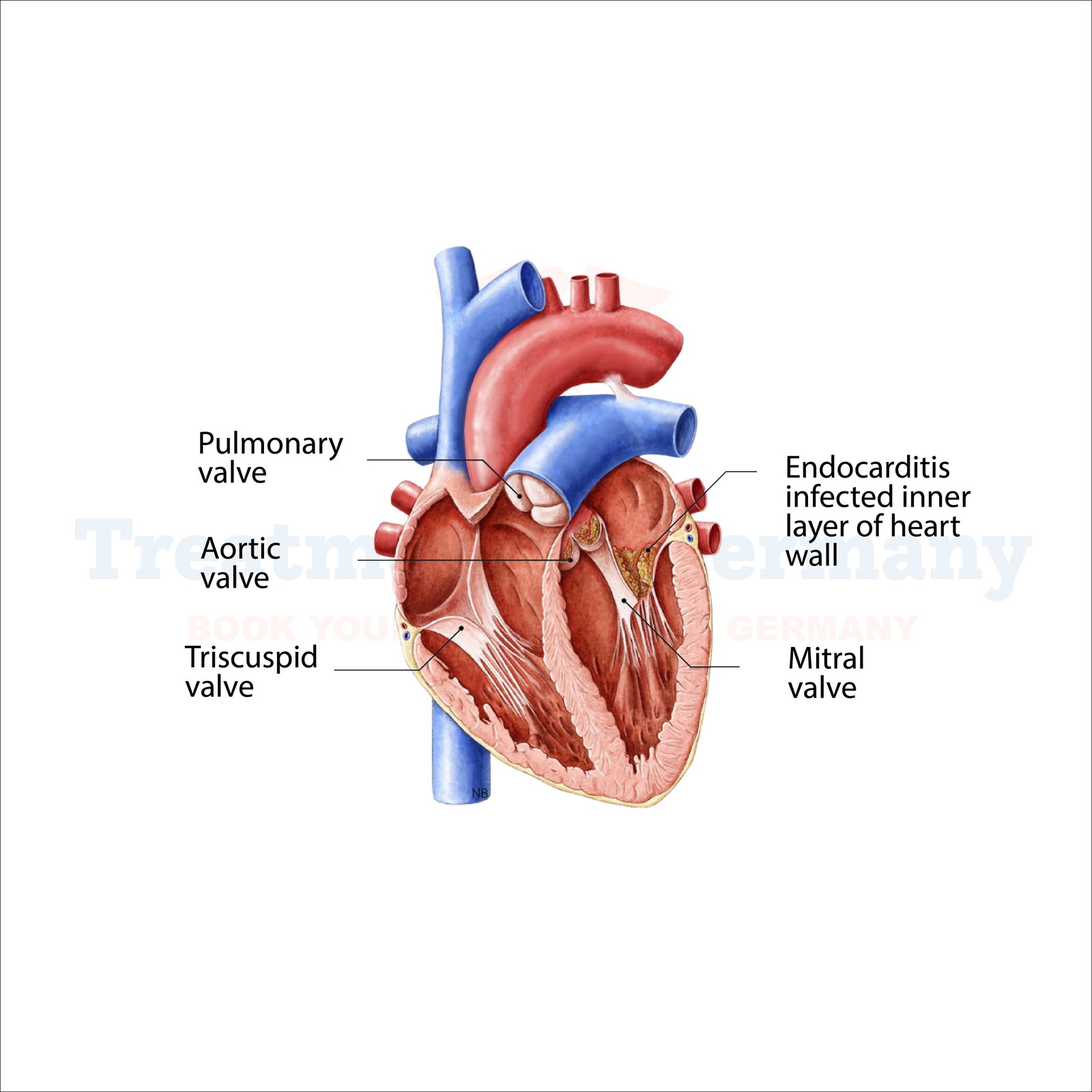Aortic dissection is considered to be a hemodynamically significant condition that might lead to sudden death in many cases and thus an urgent surgical treatment. It is a condition where the innermost layer of the aorta is torn, thus reversing normal blood flow, organ ischemia, rupture, or even death.
Germany has been acclaimed worldwide as the topmost nation as far as medical technology inventions and the efficiency of specialist doctors are concerned and thus has become the perfect haven for treating aortic dissection. Hospitals in Germany to cater to this condition have adopted a multidisciplinary team approach and modern technology.
Aortic dissection is a condition whereby there is the formation of a separation between the aorta’s inner layers by blood. This would create a form of division and may consequently lower the blood supply for the organs. The aorta, the body's biggest artery, will pump and carry oxygen-rich blood from the heart to every other area of the body.
Types of Aortic Dissection
Aortic dissections are classified into two primary categories based on location:
Causes and Risk Factors
Predisposing pathology is the major antecedent of aortic dissection because the structure of the aorta, which is liable to dissection, is already compromised. These include:
Symptoms of Aortic Dissection
In aortic dissection, the initiating sign is generally severe and abrupt. Recognizing these symptoms early can save lives, such as:
Other signs may include kidney problems, belly pain, and sweating. When such signs exist, it becomes crucial to seek medical advice on an emergency basis.
Diagnosis of Aortic Dissection in Germany
Thehealthcare system in Germanyis well developed; it does not take much time for aortic dissection diagnosis with the help of modern imaging.
Imaging Techniques
Differential Diagnosis
Since the symptoms are similar to those of other diseases like heart attacks and strokes, Germany’s specialists pay much attention to distinction to treat the affected patients appropriately.
The management of Aortic Dissection in Germany
Germany’s hospitals deliver some of the best surgical procedures to treat aortic dissection together with the current medical technologies.
Surgical Options
Open Surgery:
Percutaneous intervention cannot be offered for Stanford Type A dissections; therefore, the gold-standard therapy includes open-heart surgery. They fix this by performing a
surgical operation whereby the aortic fragment that was affected is replaced by the aorta synthetic graft.
Endovascular Repair:
Concerning Type B dissections of smaller severity, endovascular methods include the implantation of a stent graft at the aorta through punctures rather than cuts. It is most beneficial here because it matters to stabilize the aorta and to prevent it from a rupture.
Hybrid Approaches:
In some circumstances where this is possible, an endovascular and open repair might be applied where, for instance, the aneurysm extends into the ascending aorta as well as the descending aorta.
Medical Management
In chronic stable angina or as an additional treatment to surgery, drugs that slow heart rate or lower blood pressure, such as beta-blockers, are administered to alleviate pressure on the aorta.
Why Choose Germany for Aortic Dissection Treatment
Germany in the endovascular treatment of aortic dissection, considering innovation and patient- centeredness with a focus on interprofessional teamwork.
Advanced Technology
The hospitals in Germany are fully equipped with modern diagnostic instruments and surgical techniques, for example, three-dimensional imagery and robotic surgical procedures with accuracy.
Expertise and Experience
Germany’s healthcare providers have a specialized staff of cardiologists, vascular surgeons, and radiologists who offer the best solution.
Comprehensive Care
Individual attention works for patients who need precise and comprehensive treatment, starting from emergency interventions up to the remote observation of their condition.
Preventing Aortic Dissection
Although some risk factors, such as genetic predispositions, are unavoidable, proactive measures can reduce the likelihood of aortic dissection.
Prognosis and Long-Term Care
The specific prognosis of aortic dissection largely depends on adequate intervention. Untreated patients with type A dissection are likely to die within 40% within the shortest time because of rupture. However, Germany’s advancement in recent years in aspects of healthcare has advanced so much that the rates of survival have boosted.
Patients need lifelong follow-up and may need imaging with CT scans or MRIs of the aorta at regular intervals to look for complications. The blood pressure and heart rate should be controlled in athletes. So many patients are capable of living normal, happy lives after successful treatment of their diseases and conditions.
What are the various symptoms of aortic dissection?
Other signs and symptoms are sudden severe chest or back pain, loss of consciousness, and stroke-like symptoms. It’s important to go to the nearest health facility with an emergency.
How is aortic dissection diagnosed?
MRI and CT scans are used by physicians to diagnose and assess the extent of aortic dissection.
What are the potential treatments available in Germany?
The surgical treatment made in Germany includes open chest surgery and is less invasive, such as the implantation of stent grafts, depending on the type and extent of dissection.
Is prevention of aortic dissection possible?
Anti-hypertensive medications, nonsmoking, and regular monitoring, especially among high-risk populations, can greatly reduce this risk.
Why is Germany a top place for treating aortic dissection?
Germany has proved to be one of the best country for medical tourists due to innovation, expertise, and patient-centeredness when it comes to offering medical care such as aortic dissection.
👉 Contact us for
further information and receive a complimentary consultation.

.webp)
.webp)
 (1).webp)
 (1).webp)

.webp)
.webp)
 (1).webp)
 (1).webp)
